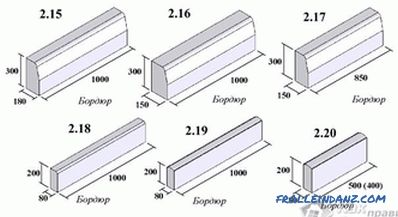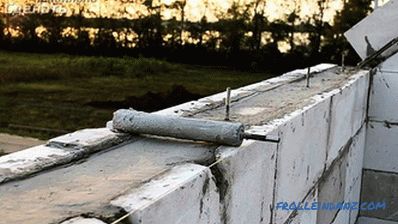In order to provide strength and durability to the foundation of a house or any other building, it is necessary to install waterproofing. Proper foundation waterproofing is a guarantee of the reliability of the entire building. After all, if the foundation is destroyed, the structure itself will be damaged. In this article, we will tell you how to do the foundation waterproofing with your own hands, consider the methods, and also show photos and video instructions.
Methods

There are two ways to waterproof the foundation: anti-corrosion and anti-filtration .
Anti-filtration waterproofing of the foundation is not done. Its arrangement requires high-class specialists who have experience in this field. However, in most cases such protection is not required. Anti-filtration system is needed only in places with high levels of moisture. For simple country houses, baths, garages suitable anti-corrosion waterproofing.
Anti-corrosion waterproofing can be:
- horizontal;
- vertical.
Vertical protection is more complex in execution, however, it is very effective.
Horizontal
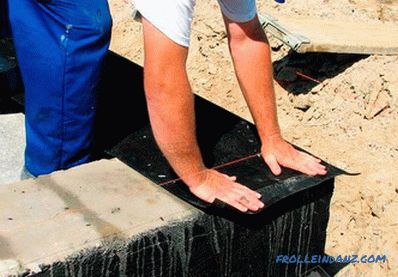
The horizontal system for protecting the foundation from moisture is made of ordinary roofing felt folded several times. It is installed very simply and more common than all other types of waterproofing.
Horizontal waterproofing serves to protect against capillary penetration of water and steam.
- Waterproofing of this type is laid in two places: under the wall supports directly on the foundation slabs and in the ceilings of the basement.
- If vertical waterproofing is additionally installed, then it must be ensured that the materials are evenly joined.
Vertical
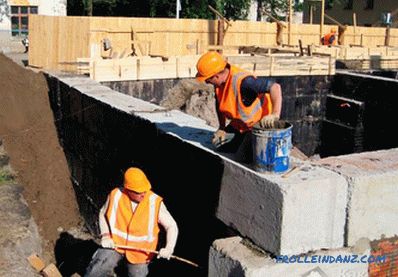
This foundation protection system is superimposed on its base. For waterproofing, you can use liquid bitumen. In the process of working with this material should only be remembered that it emits harmful fumes in a heated form. Therefore, should be protected.
Vertical protection can be:
- painting;
- pasting;
- mixed.
When applying vertical waterproofing, pay due attention to the handling of material joints, which are often vulnerable to moisture penetration.
Paint waterproofing is made using bitumen, which is applied to the surface. In the vertical waterproofing can also be used roofing material.
Liquid bitumen
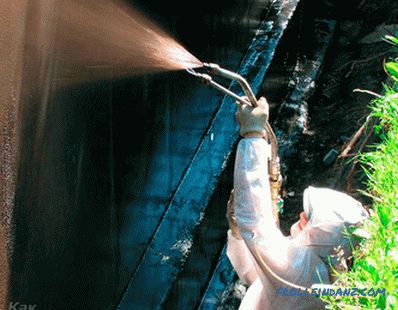 Waterproofing with liquid bitumen
Waterproofing with liquid bitumen
Liquid bitumen is an excellent material for waterproofing foundation. It:
- inexpensive and practical;
- easy to apply;
- does not require the participation of specialists;
- fills all pores, cracks and gaps in the foundation ;
- perfectly resists not only moisture but also other aggressive factors;
- is available.
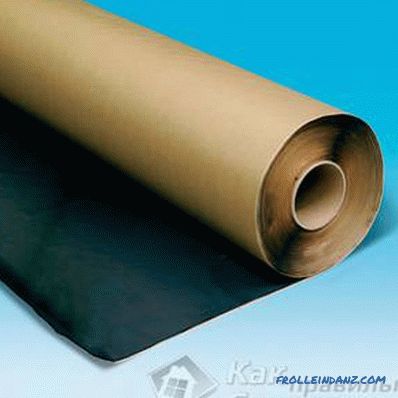
Liquid bitumen has disadvantages. The main one is that this material in a heated condition is very harmful.
Work with bitumen should be done only with the use of protective equipment. In addition, bitumen requires regular heating, and it must be carefully monitored. This material quickly ignites and burns, exuding asphyxiating smoke and unpleasant odor.
To make waterproofing with bitumen, follow the instructions below.
- It is necessary to find a container in which the composition will be heated.
- Place used oil and bitumen in the tank. Oil is simply necessary in this case, as it informs the material of a number of valuable properties.
- Bitumen and oil are heated. They must become a single composition. Only then can you start work.
- To waterproof the foundation with bitumen, it is necessary to immerse the roller in the composition and then cover the entire base with the mixture. This method is done waterproofing strip foundation, basement and supports.
Drainage
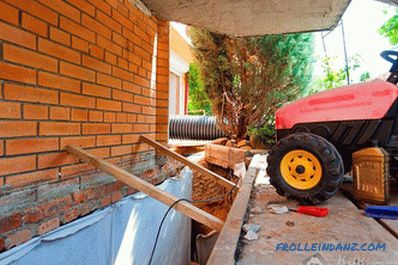
Waterproofing is not limited to the treatment of the foundation basement and basement. In order to protect the house from moisture, it is necessary to conduct high-quality drainage next to the house itself. For this it is necessary to equip one simple system.
- It is necessary to dig a trench along the entire perimeter of the foundation at a distance of about 3-4 meters. The depth of such a trench can be more than a meter. The nature of the drainage ditch differs from other types of trenches and ditches in that this ditch goes downhill. Moreover, the bias leads away from the house.
- Plastic pipes are laid in the trench. The ends of the tubes should be wrapped so that they are well diverted water and not clogged.
- The whole system is filled with sand and gravel. From above it is covered with primer.
After arranging the drainage system, you should not worry that the basement will be flooded after the snow melts on the site. When arranging such a system, you must be careful.In the event of an error, water can start flowing directly to the foundation. In difficult cases for such work it is better to invite a specialist.
An additional measure of protection is an external drainage system. These are various trays and water collectors. This method was known in ancient times. It still works effectively. Before you make the waterproofing of the foundation of the house, it is necessary to consider the drainage area.
Tape foundations
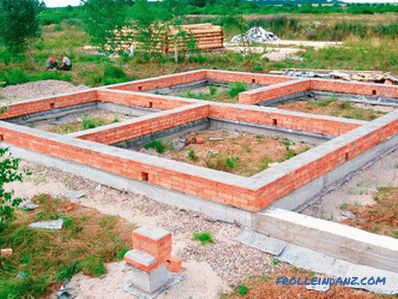 Tape
Tape
Water is affected by the tape foundation:
- capillary;
- sedimentary;
- groundwater.
When arranging waterproofing, it is necessary to take into account all types of damage that moisture can cause in various ways.
Waterproofing can be:
- non-pressure;
- anti-pressure;
- capillary.
Free-flow
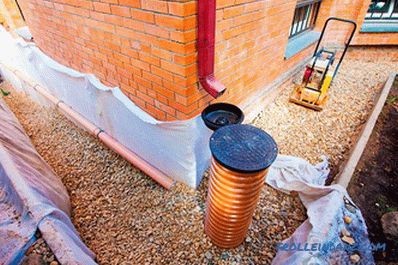
Free-flow waterproofing is designed for seasonal melting of snow when water rises to the foundation. It is made as follows:
- First you need to dig a trench about 25 cm deep along the perimeter of the foundation.
- A layer of clay is laid in the trench. From above, this layer is covered with sand and rubble.
- An inclined blind area is made near the foundation, in which drainage channels should be laid.
After the arrangement of such a system, seasonal waters will no longer pose a danger to the strip foundations.
Anti-pressure
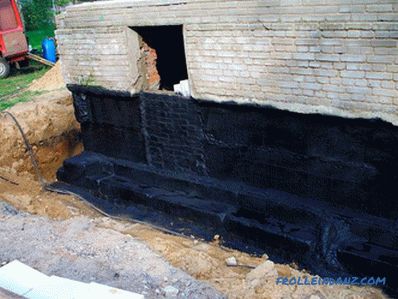
This type of insulation is made using various sprayed and coating agents. It protects the foundation constantly from any moisture. As a result of the work, a special membrane is created, which has water-repellent characteristics.
Capillary
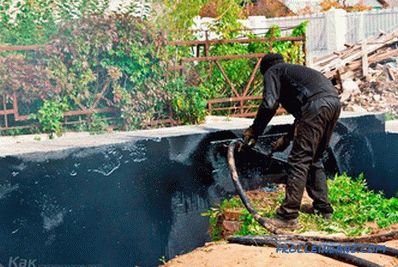
This type of foundation protection must completely fill all cracks and small cracks. One of the most effective ways to create capillary waterproofing is liquid bitumen. This method has already been described above.
Materials
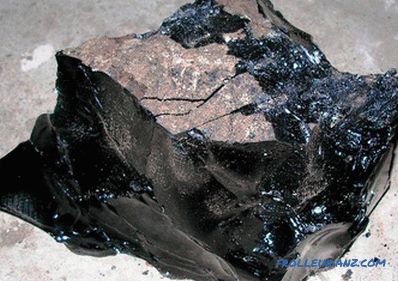 Construction bitumen
Construction bitumen
The material that is used for waterproofing should have the following characteristics:
- First of all, of course, it must repel water.
- The second important property of the material is its resistance to various aggressive influences. It is not only about exposure to moisture. What is the use of protective material, if it can be easily destroyed by temperature differences or under the influence of steam? Resistance - one of the main characteristics of the waterproofing foundation.
- A water insulator that the master plans to apply on his own should be easy to use. It should be easily sprayed or applied. If you need professional equipment for waterproofing, it makes no sense to purchase such material.
- The material for waterproofing must necessarily be environmentally friendly and safe. In no case should dangerous substances be applied to the base of the house. Because they somehow penetrate into the home. Liquid bitumen is safe until it is heated.
- The water insulator must also be elastic.
Video
For more information about foundation waterproofing, see the following videos:

